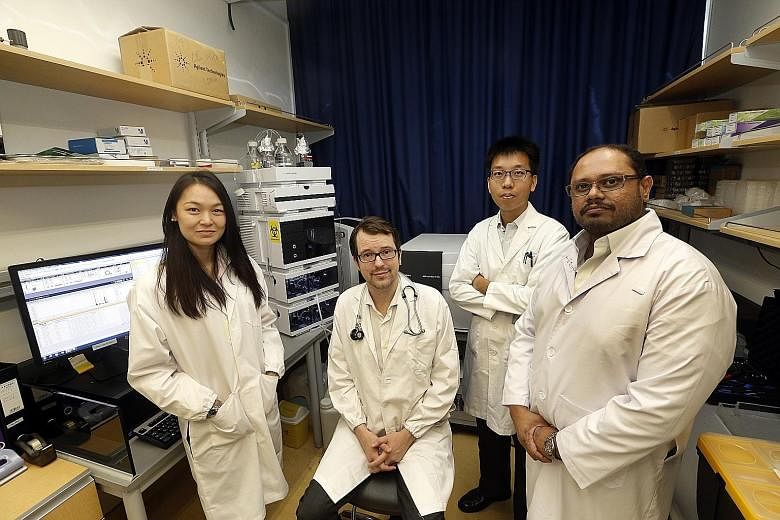A protein that protects the heart from injury could be key to understanding a form of heart failure that is both hard to diagnose and treat.
A local study on 657 men and women found that the protein, thymosin beta-4 (TB4), is elevated in women with a form of heart failure called preserved ejection fraction (HFpEF).
The heart of a patient with HFpEF has trouble relaxing after a pump, hence it struggles to take in blood between beats. But this malfunction is hard to detect in the clinic, either through an ultrasound or an X-ray.
However, with TB4 detectable in blood, a simple blood test could in future be enough to detect this form of heart failure, said lead researcher Chester Drum from the National University Heart Centre, Singapore.
The findings from the one-year study were published in the Journal Of The American Heart Association.
The protein could also be used in the clinic as a biomarker in the next three to four years, to predict if a patient is responding to treatment, Assistant Professor Drum said.
As TB4 can protect the heart from injury, it is seen as a marker of cardiac healing where more of it means there is more damage to heal.
Said Prof Drum: "TB4 is elevated as a response to an underlying disease. Therefore it is highest in the sickest patients and correlates with death. I think the way it will eventually be used when you initiate a therapy is that when it is starting to heal the heart, you watch the TB4 level to make sure you are doing the right thing."
A fall in the amount of TB4 would indicate that the therapy is working.
He added that drug companies have shown interest in the team's findings on TB4, which can be used to test for drug efficacy during clinical trials.
HFpEF occurs in between 17 per cent and 38 per cent of all heart failure cases in Singapore, and is more common in women.
Associate Professor Yeo Khung Keong, a senior consultant in cardiology at the National Heart Centre Singapore, said any new marker that can detect, predict or help in the diagnosis of HFpEF is exciting and could potentially change how a cardiologist treats patients.
Currently, there is no proven therapy for HFpEF, and doctors can only treat its symptoms.
Prof Yeo said the next step should be to see how TB4 relates to HFpEF and whether it is, for instance, the body's way of coping with heart failure, or a response to a symptom. "When we understand its role, we can then augment or block its role, and in turn treat heart failure."
Samantha Boh

